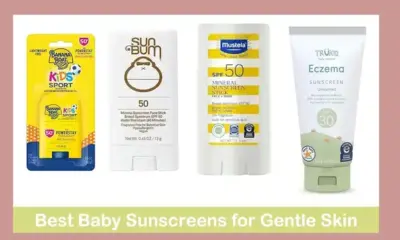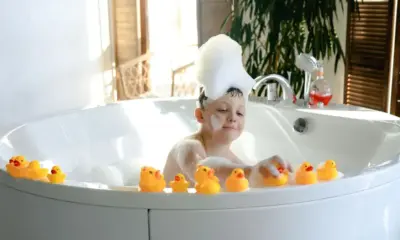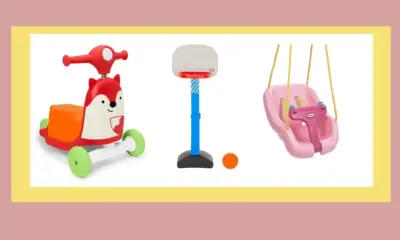Toys
Best Kids’ Sandboxes That Offer Unlimited Playtime Fun
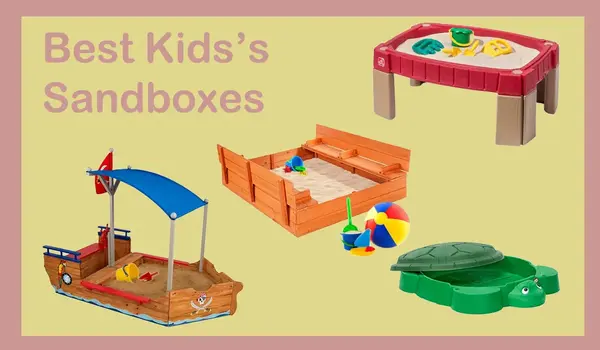
Best Sandboxes for Kids: Top Picks for Fun, Learning, and Outdoor Play
When warm weather arrives, outdoor toys help children stay active, curious, and engaged. Sandboxes make outdoor playtime more creative.
From building castles to digging tunnels, these toys offer sensory-rich experiences that enhance early development and imaginative thinking.
Many parents love sandboxes because they combine physical, social, and sensory play into one engaging outdoor activity for toddlers.
Sandboxes, like swing sets and kiddie pools, can turn a backyard into a stimulating play zone full of adventure and discovery.
According to pediatricians, sandboxes provide ideal tactile experiences that support early childhood growth and sensory development.
“The elements of creative and imaginary play, combined with fine motor skills, offer a myriad of possibilities,” says Dr. Playforth.
Sand play also stimulates hand strength, coordination, and concentration. It’s an excellent alternative to screen time and indoor distractions.
Dr. Wilber agrees, saying sand’s unique texture encourages creative exploration using molds, scoops, and little fingers digging through grains.
How We Selected the Best Sandboxes for Kids
We asked pediatricians about the safest and most developmental features sandboxes should include for toddlers and young children.
One critical feature both experts recommended is a sandbox cover to keep out animals and protect the sand from debris.
We also analyzed user reviews and parent recommendations to find durable, easy-to-use sandboxes that fit multiple outdoor spaces.
All sandboxes on this list include covers and are age-appropriate, safe, and designed to last multiple seasons of messy fun.
Top Picks: Best Sandboxes for Kids
Below are our favorite options that combine sensory play, imaginative fun, and long-lasting outdoor enjoyment.
Best Overall Sandbox
Best Choice Products Kids Large Wooden Sandbox
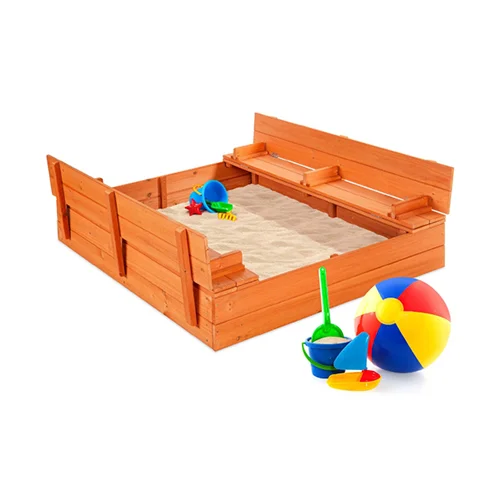
Recommended Age: 3+ years
Pros
- Sturdy cedar wood construction
- Converts into a cover with seating
- Spacious yet compact design
Cons
- Requires a drill for assembly
Why We Love It
This sandbox offers great functionality and style. The benches convert into a lid to protect the sand when not in use.
It fits up to four children and doesn’t take up too much space, making it ideal for families with mid-sized backyards.
Parents appreciate the heat-treated cedar wood and aromatic scent. Just remember to grab a drill for smoother assembly.
Best Sand Table
Step2 Naturally Playful Sand Table

Recommended Age: 2+ years
Pros
- Can be used indoors or outdoors
- Includes built-in toys
- Easy to clean and maintain
Cons
- Kids may outgrow it quickly
Why We Love It
If you’re short on space, this sand table brings the same sensory benefits without needing a full sandbox setup.
The lid locks in place, and the included toys promote scooping, pouring, and fine motor coordination during playtime.
It’s versatile too—use water instead of sand or add kinetic sand for mess-free indoor fun.
Best Large Sandbox
Creative Cedar Designs Octagon Wooden Sandbox
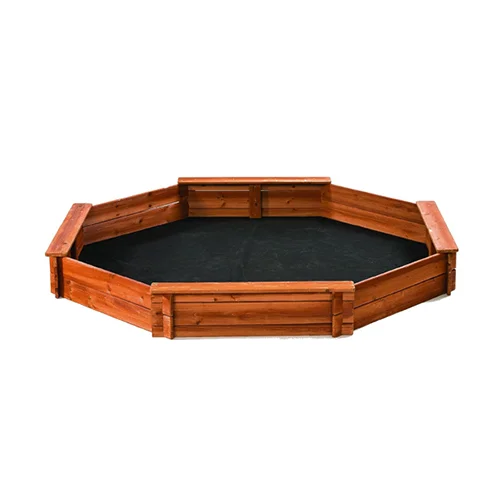
Recommended Age: 18 months+
Pros
- Extra-large design
- Durable cedar construction
- Simple assembly process
Cons
- Some complaints about the cover
Why We Love It
This large octagon-shaped sandbox fits several children and includes built-in benches for social, cooperative play.
Its simple assembly and strong cedar build make it a durable choice for bigger families or shared play areas.
This model also deserves mention as one of the Best Sandboxes for Kids due to its exceptional size and lasting materials.
Some parents had issues with water pooling on the cover, but they found clever DIY solutions to solve that.
Best Affordable Sandbox
Little Tikes Turtle Sandbox
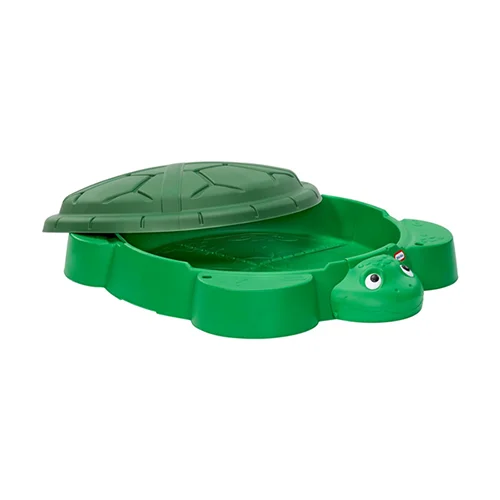
Recommended Age: 1–6 years
Pros
- Compact and portable
- Includes built-in seating and umbrella slots
Cons
- Some found the plastic a bit thin
Why We Love It
This adorable turtle-shaped sandbox is perfect for beginners and families looking for a budget-friendly introduction to outdoor play.
With 100 pounds of sand capacity, it’s great for one or two children. Parents love the easy-to-remove lid and snap-on design.
Many reviewers mentioned how well it fits on patios or decks—perfect for smaller outdoor areas or apartment balconies.
The cover keeps the sand safe from pets and debris, making it a favorite among parents searching for Best Sandboxes for Kids.
Best Sandbox for Imaginative Play
KidKraft Wooden Pirate Sandbox with Canopy
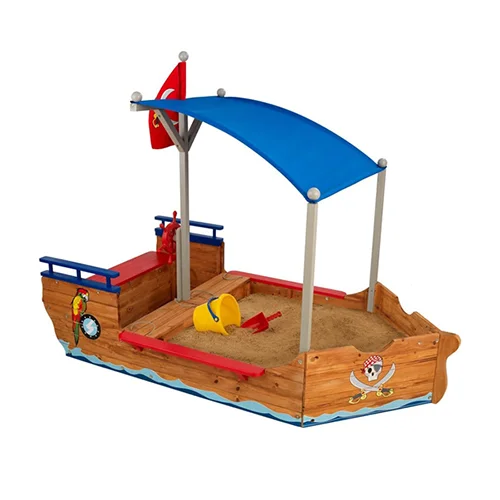
Recommended Age: 3–8 years
Pros
- Pirate-themed design with storage
- Large shaded play area
- Simple to assemble
Cons
- Plastic floor feels thin for some users
Why We Love It
Bring your child’s pirate fantasies to life with this imaginative sandbox complete with flags, a wheel, and creative decals.
The canopy provides shade, and there’s space to store tools and toys after each adventurous session digging for treasure.
Parents should consider applying a waterproof sealant to preserve the non-cedar wood for long-term use.
It adds immersive play that goes beyond scooping and pouring—ideal for older toddlers or siblings with vivid imaginations.
Best Indoor Sandbox
Kinetic Sand Folding Sand Box
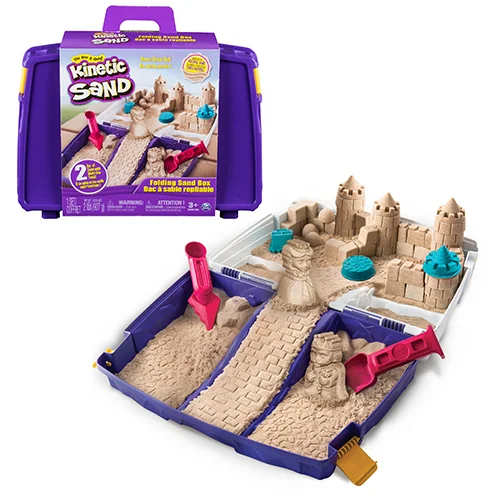
Recommended Age: 3+ years
Pros
- Portable and lightweight
- Includes 2 pounds of kinetic sand
- Comes with tools and molds
Cons
- Limited sand quantity included
Why We Love It
For indoor play without the mess, kinetic sand is the go-to option for sensory development on rainy days or travel.
This folding box makes it easy to pack up and bring along, keeping the play area neat and self-contained.
Use it on a table, floor, or desk and combine it with molds for limitless shaping and fun.
Parents love how the sand sticks together and minimizes cleanup, making this a great backup for bad-weather days.
Despite its size, it belongs in any list of Best Sandboxes for Kids thanks to its versatility and portable design.
Factors to Consider When Choosing the Right Sandbox
1. Size and Space Availability
Choose a sandbox that fits your backyard or patio while still giving your child enough room to play freely.
2. Material and Durability
Wood and plastic are the two most common materials. Look for UV-resistant plastic or treated wood for better longevity.
3. Ease of Assembly
Some sandboxes snap together while others require drilling. Decide based on your tools and experience with DIY projects.
4. Cover Design
Every sandbox needs a cover to prevent animals, leaves, or water from entering. Some lids double as benches or tabletops.
5. Accessories and Features
Toy storage, seats, built-in shades, or themes can elevate the sandbox experience and increase long-term interest from your child.
Final Thoughts on Outdoor Play and Sandboxes
Outdoor play builds stronger bodies and minds. Sandboxes offer more than fun—they nurture motor skills, sensory awareness, and creativity.
Finding the Best Sandboxes for Kids involves knowing your space, your child’s age, and what features matter most to you.
Every family’s needs are different, but with the right sandbox, your child will enjoy endless hours of imaginative, screen-free play.
So go ahead—grab your shovel, some sunblock, and let the adventures begin.
Ready for More Family Tips and Play Ideas?
Explore more news on this website for helpful parenting guides, expert reviews, and the latest trends in children’s products.

